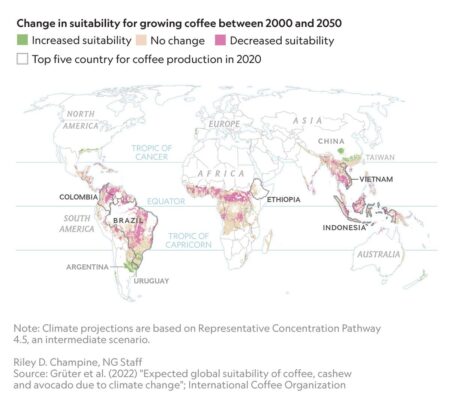The American Geographic Society had a very informative post about coffee prices on Facebook a few days back. I don’t really want to link to it, but I’m sure you can find it if you want. Anyway, here’s the text.
Coffee prices have hit a 50-year high due to a combination of rising costs of production, supply chain disruptions, and climate change–related declines in crop yields. Coffee plants are sensitive to changes in precipitation and temperature, and recent droughts in Brazil and Vietnam resulted in poor harvests. Coffee companies are passing on the extra costs to customers, with the average retail price of ground roast coffee increasing 15 percent in American cities in the past year and peaking at over $7 a pound. As climate change will continue to threaten coffee harvests in the years to come, projected to shrink the land available for coffee cultivation by half, prices are expected to keep rising.
They also helpfully link to three recent supporting articles in the NY Times, The Independent and on ABC News.
And they reproduce a map from a National Geographic article from a couple of years back.

Social media as it should be done.
And since we’re on the subject, there are some very cool resources on coffee diversity on the website of Christophe Montagnon, a renowned expert on the crop. For example, I really like this summary of the global history of arabica.

We’re going to need those resources — and indeed that diversity — if we want to keep drinking coffee.